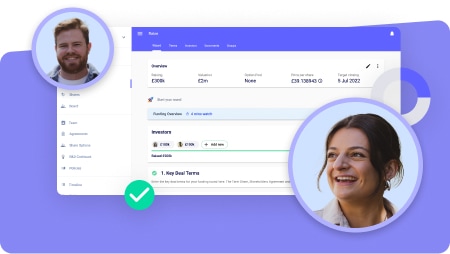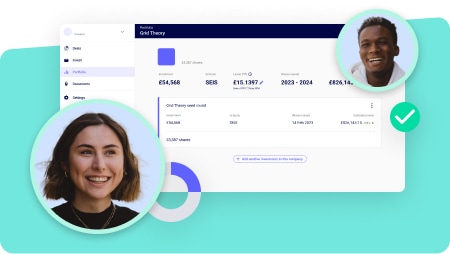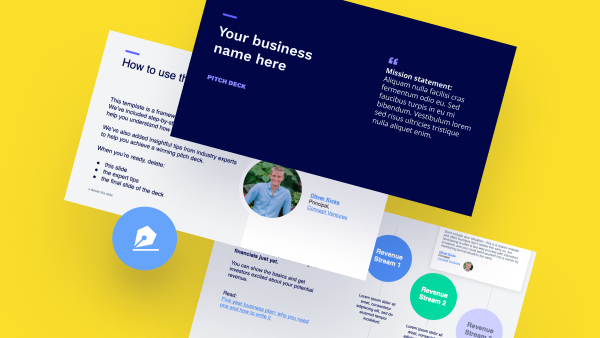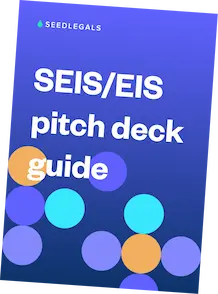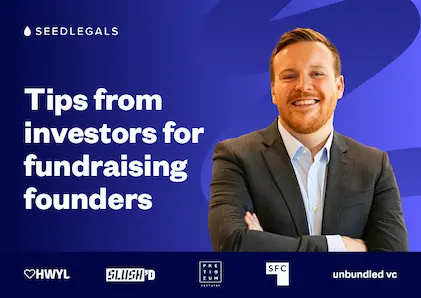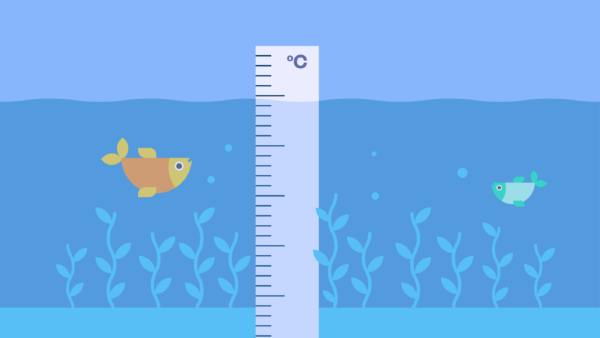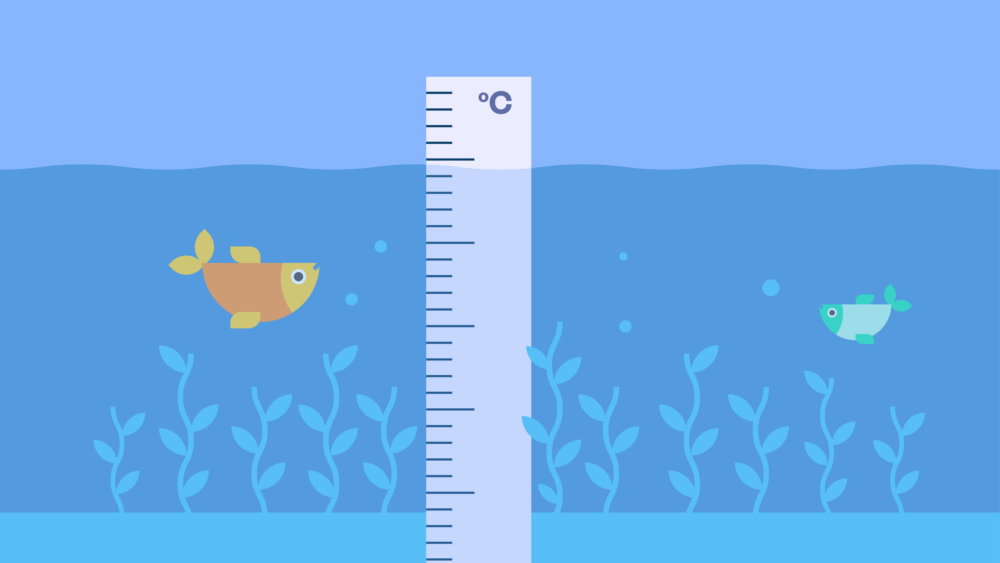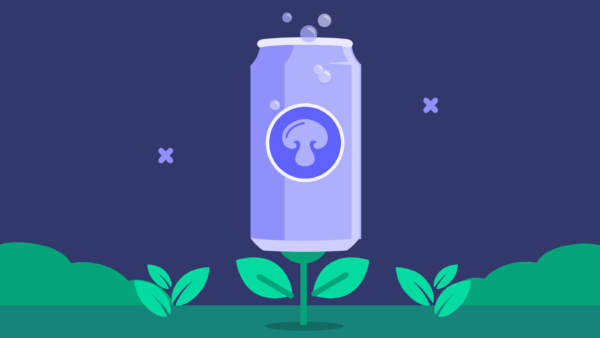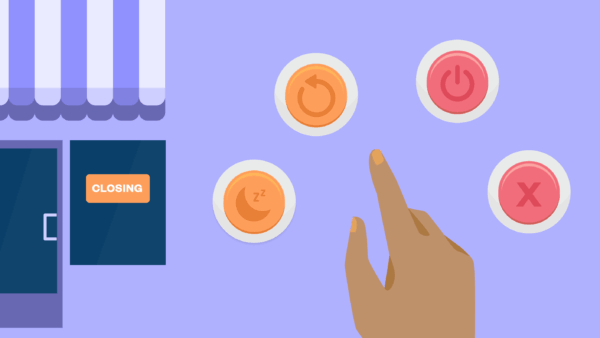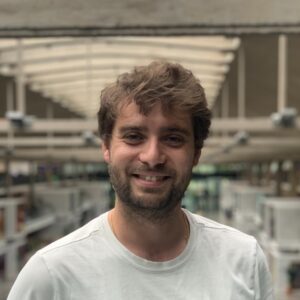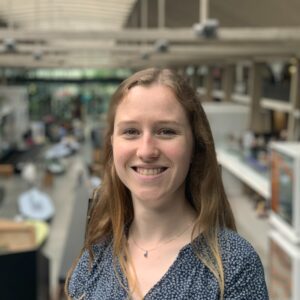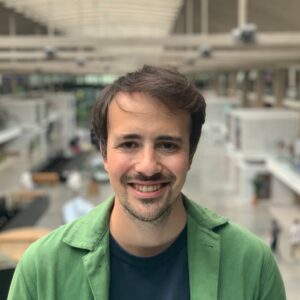Read transcript
Anthony: Hello, I’m Anthony, founder at SeedLegals, and every day I meet amazing founders on SeedLegals. So today I’m talking to John Auckland from Seafields. And this is especially great because Seafields was the Startup of the Year winner at last year’s inaugural SeedLegals Awards. So John, amazing. Congrats. Seafields was the winner of Best Startup of the year at last year’s SeedLegals Awards. How did that help you? How did you leverage it? I know that there was a £25,000 investment that came with this. So tell us more.
John: Yeah. So, I mean, the £25,000 investment actually was matched as well by Angel of the Year. So it became 50,000. I mean, I’m not promising that that’s going to happen for every startup every year. But, no that works incredibly well for us. Not just the money. I mean, the money was helpful, and it came at a time as well, we’re again doing an agile fundraising round. It came at a time where cash was starting to get low, and we kind of almost exhausted our networks a bit, and it just kicked life back into our fundraiser and gave us our validation, not just because we got the investment, from the Angel of the Year and from winning the award.
But by being an award winner and amazingly, I didn’t, you know, for the 15 years I’ve kind of been involved in this sort of impact and impact investing. I’ve never won an award before. So, yeah, just, it meant an awful lot to me. And, we’ve obviously plastered it all over our social media channels and, you know. And it also just helps when we’ve been at other events where I’ve been doing speaking arrangements to say that we were Startup of the Year, and it’s just added a whole different layer of credibility to what we’re doing.
Anthony: So for anyone watching this, head over to seedlegalsawards.com. Follow the action for this year and, sign up so that you can apply for next year. Because if you don’t apply, you can’t win. So John welcome. Seafields has this amazing mission of using seaweed to capture… Anyway, you tell me what Seafields is doing and how it’s going to save the planet.
John: Yeah, well, thank you for having me Anthony. And, yeah, very pleased to win the award last year. Very exciting for us. So Seafields is born on the premise that to solve the climate crisis, we’ve got to grow a lot of plants. And the challenge of growing more plants on land is that the land is getting less fertile and more scarce. So how do we solve this problem? Because if you can grow a lot of plants, you can solve food security. You can have a lot of carbon stored in the living biomass of the plants, and you can provide an alternative and viable feedstock to oil in most of our major industries, because the predominant feedstock is oil for many things in our lives, like plastics, fuels, you know, chemicals and so on. But these can all be created from plants as well.
The problem is we can’t grow the plants cheaply enough and abundantly enough. And so Sargassum seaweed is really unique. It spends its entire life cycle free floating. And that’s really unusual for seaweeds. Most of them, what we call benthic species, which means they attach to the seabed and are only grown in coastal regions. They might detach and then float away, but, you know, coastal regions are also quite saturated.
So Sargassum seaweed can be grown in the open ocean and what we call the subtropical gyres. And most of those people know the gyres for the garbage patches that congregate there, you know, and the same properties that keeps the garbage there can also keep floating seaweed there. And these are massive, massive areas of the planet. I mean, they cover 50% of the planet’s surface. So we can grow seaweed there instead of congregating plastic. We can literally solve the climate crisis and replace oil as the predominant feedstock to industry.
Anthony: That’s amazing. So how many people at Seafields now and how are you solving this?
John: There’s 15 of us. And, we’re solving it by starting small. There’s no market for Sargassum seaweed. You can’t just grow it and then give it to, you know, the existing industry supply chains and ask them to turn them into things they’ve got to adapt, they’ve got to grow. What’s good for us and not so good for the Caribbean is that they have an abundance of this seaweed in the Caribbean, it’s a problem there. It evolved in the Sargasso Sea, which is the North Atlantic gyre.
And climate change has pushed it out of its natural habitats into a newly formed great Atlantic Sargassum belt, as it’s called. This is a linear current. It pushes all that seaweed every year onto the beaches. Most of it hits Mexico, a lot of the eastern Caribbean all the way through, and it kills the tourism trade, kills the baby turtles. It’s pretty horrific. So we’re going to go there. We just launched our new product, if you want to call it that, which is a hotel service where we build infrastructure in front of hotels to stop the seaweed from hitting their beaches deflected into our proprietary algae products, paddocks that we call them, where we keep the seaweed fresh.
And that’s the key of the seaweed. Hits the beach, it starts to rot and it loses its value. We can keep it in water, it retains all its value, and it’s very valuable. And yet, even with all of that, you know, the challenge of sort of, catching it because it’s a floating seaweed species, it’s still significantly cheaper than other types of seaweeds, to grow and to harvest.
So we’ve got a massive cost advantage versus kelps and spirulinas and reds and all this kind of stuff. So, you know, we just want to keep the seaweed, and the hotel will pay us to kind of put the defensive barriers in place to stop the seaweed from hitting. So it’s kind of a symbiotic relationship between the two of us.
Anthony: And then you process, do you eventually bury it down the bottom of the ocean. Tell me more, what happens to the seaweed later on?
John: Yeah. So, we do a first stage of processing. We’re not a product company. We’re, you know, farmers effectively. So we deal in the commodity of seaweed. What end of life that ends up in is entirely dependent on the market. So typically we do the first stage of processing, which is where we separate the liquid from the solid that stabilizes both components. The liquid that is stabilized for months, the solid for years, the solid pulp. The liquid is typically filtered and sold to farmers as a bio stimulant. So it boosts crop growth, terrestrial crops by, you know, up to 14, 15%, which is huge.
It outperforms other seaweed types, seaweed by stimulants. It’s very cheap to apply. And farmers that are very margin-driven or margin-sensitive, should I say, you know, if they’re getting a 15% increase in their crop yields, that’s massive for them. That’s straight on the bottom line. So, that’s where the liquid is going. And the solid pulp, will be bought by any number of different companies. At the moment, we’re selling it mainly to chemicals companies that are, the seaweeds have got this, alginates in it, which is a type of polysaccharide that is very good as a thickening agent or bonds oil to water. So as an emulsifier, it makes very nice glues, so makes lots of really nice products.
It can also be turned into bioplastics. And it can be eventually processed as a fuel. But the cost curve is not in the right place for that right now. So it’s very sort of nascent research. And as you touched on, it can also be a carbon removal. So any seaweed pulp that isn’t sold to industry, we then convert over into biochar which is a carbon credits available right now.
And so there’s a methodology we can apply for which locks away the carbon for thousands of years. Or, eventually if the MRV and the environmental impact assessments prove that it’s safe to do this, we can also sink it to the deep ocean where that would be stored away for geological timescales at very, very low cost. And of course, if we’re in the open ocean, this is why we’re so interested in the open ocean for that methodology.
Because if we’ve growing billions of tonnes of seaweed, that’s billions of tonnes of CO2 removal, which is the sort of scale of removal that we need to achieve for the planet to reverse most of the major effects that we’re kind of already seeing today.
Anthony: And I think you can see why Seafields won Startup of the Year at SeedLegals Awards. So that’s in a global scale, an ambition for good. Obviously the biggest good. And then of course, starting local in a sense, because you’ve got to build a business model and revenue stream and so on. So you’re fundraising right now, let’s talk about your fundraising journey. Agile fundraising. So you’ve done a funding round, topping up a round, one of the things that I’m going to dive into here is once upon a time, you know, founders thought they have to do a funding round.
And then we coined the term agile fundraising, which is raising with SeedFASTs ahead of around then doing a round with a road and close. And actually these days on SeedLegals, the funding round is almost a dinosaur. 70% of fundraising is ahead of a round or topping up a round. So tell me about, you know, the plans that you’ve got raising now, and then perhaps a larger raise later on and so on.
John: Yeah, I think you explained it really well already with this sort of agile fundraising concept. So, you know, my background is in impact investing. You know, I’ve started a fund and I know the challenges of funds themselves are often raising funds from LPs. And, you know, often they’re courting you, but they’re not actually ready to deploy because they have the funds to deploy themselves. And also, I think there’s a tendency, especially in the environmental impact space, for startups to take VC money too early. But I don’t think it’s necessarily a good thing. So we managed to avoid taking too much VC money. Not that it’s bad thing, right? It’s just, you know, you start to hand over the control of your direction very early.
Anthony: If you’re a VC watching, you can still send money.
John: You can still send money, absolutely, I will happily take it. But I think it’s also, you know, a lot of impact type businesses, you know, maybe they’ve got a slightly longer horizon than typical. Maybe the risks are higher. We’ve got regulatory risks being in the open ocean that, you know, present new challenges. The VCs struggle to kind of maybe get their heads around, whereas angel investors that are a bit more driven by sort of passion and purpose, perhaps, are maybe willing to take a bit more of a risk or use the sort of riskier end of their investment money to take a punt because it helps them feel good.
Right. And so, an agile funding round was a natural fit for us. We thought we did really, really well raising from angel investors. We’re still probably a year away from being able to raise from VC to validate, you know, all those really, really risky points to a level that VC will be happy. So, I mean, I genuinely don’t think, and this is I’m not just, you know, promoting SeedLegals because I’m in this interview. I do outside of these circumstances as well. I genuinely don’t think companies like Seafields can exist without something like an agile funding round, without platforms like SeedLegals.
Anthony: And I’m delighted to hear that. And I have to say, you know, democratizing and make it possible for founders to raise and the sad realities in the UK, you know, founders, when they’re looking for investors, they don’t know any angel investors. They do some googling, they find VCs, they write to VC is if they ever get an interview, or a meeting, you know, it’s “love what you’re doing, come back later” because the reality is VCs have got investment committees. They’ll typically only invest once you’ve got revenue. Often only in B2B SaaS companies because they’re revenue based, they can scale at low cost, and everyone else, earlier stage, you’re struggling. And so being able to use agile fundraising to reach out to angels and raise earlier to get you to the next step is super important. And being able to productize that and reduce the cost. I’m delighted we could help on that. So what are the next steps for Seafields? Tell us quickly what you’re going to be doing. These are the big things over the next year.
John: Yeah. So as we touched on, we’ve got this amazing sort of visionary business model with the open ocean, but the open ocean is quite challenging to even do research in, let alone start commercial activities. And so, we kind of, separated the two halves of our business in a sense and we’re doing research in the open ocean. We spent the last four years really learning how to domesticate, is probably the best word to describe it, floating Sargassum seaweed to a level now where we know we can control it. We know we can grow it. We know, I mean, it doesn’t need a lot of feeding, but we know how to feed it and all these kind of things that you need to be able to do to actually start to commercialize Sargassum into a product, or a commodity, should I say, so we’re ready to go.
The great news is that, at first of a kind, you know, the smallest possible farms were profitable. Because it’s such a big problem for hotels, they’re spending, on average, about $250,000 per kilometer to keep their beaches clear of seaweed. So if that money was that spent on, you know, valorization pathway rather than just a waste management pathway, actually you can, you know, it’s quite profitable for companies like us that kind of sit in that, in that space.
Because we almost kind of sell twice, right? We sell to the hotels and then we sell to the product companies. It’s always a nice business model when you have two customers both paying. So that’s where we are now, we’re launching into the Caribbean, mainly the eastern Caribbean countries that have got a sargassum problem, but it’s not, there’s not so much of the seaweed that an industry’s kind of sprung up around them. So in Mexico there’s so much of the seaweed that there’s product companies all over the place that are turning it into concrete, into textiles, into 3D printed materials and all that infrastructure exists there to deal with the seaweed when it comes in.
The smaller eastern Caribbean countries don’t have that. So our solution works really well for them because we can, you know, not using very much space, keep the beach clean, move the seaweed into our in-water storage solution, the algaponics, it will grow at about 5% a day inside that algaponics. We harvest at about 5% a day. If a really big influx is coming in, we empty our products over harvest, put the machine, you know, run the machines for 24 hours a day. To maximize the, you know, the sort of yield, so to speak, and then refill our paddocks and then the influx is kind of cleared and then we’re back to kind of business as usual.
And so that model, we’ve got customers that already want to buy the seaweed, the pulp, we’re starting to develop customers that want to buy the bio stimulants. If any farmers or anyone in AgTech is kind of listening to this, you know, this stuff is amazing when it’s sprayed on farmers field. So, we are looking to speak to more farmers because that’s the real sort of valuable bit.
Both I think, you know, in terms of how we can make an impact now on land, not just on sea, to farmers livelihoods and to, you know, we use too many fertilizers on our soils anyway, it’s probably a problem most of the listeners listening to this will know about, right? And so bio-stimulants are a much softer way of encouraging crop growth, not using these artificial fertilizers that scorch the earth. So we’re really looking for people that can help us sell at volume those bio-stimulants, I think, and then hotels in the Caribbean that have a Sargassum problem, that’s our kind of biggest, basic kind of customer that we want to speak to.
Anthony: All right. So I’m just as you’re talking, imagining the world, you know, 20 or 30 years from now, temperatures have risen. There’s a big problem. There are, in like a science fiction movie, they’re as far as the eye can see vast swathes of ocean being harvested and, you know, set up by Seafields, turning the, you know, carbon capture and so on and creating new products and so on, which sounds amazing. So where can people learn more about Seafields?
John: So there’s a lot of useful information on our website, including the deeply sort of technical science aspects of what we do, we are very science led. So, just visit www.seafields.eco and you can find out all about, you know, our technology, how it works and Sargassum and why it’s such a wondrous seaweed.
Anthony: All right, John, that was fascinating. Thank you so much. And, I’m looking forward to find out more as well and seeing you at SeedLegals Awards this year.
John: I can’t wait to be there.
Anthony: Thank you.
Seafields, our sensational 2024 SeedLegals Startup of the Year winner, is on a mission to turn a global problem into a powerful climate solution.
Founded by John Auckland, Seafields is pioneering the farming of Sargassum seaweed in the open ocean. This free-floating seaweed has long been a nuisance for Caribbean coastlines – disrupting ecosystems, damaging tourism, and piling up in huge quantities. But Seafields sees it differently: as a fast-growing, untapped source of biomass that could help remove carbon from the atmosphere and replace fossil fuels.
Instead of relying on land that’s already stretched to its limits, they’re scaling seaweed farming in the vast subtropical gyres- turning empty ocean spaces into floating climate tech.
In this interview, SeedLegals CEO Anthony Rose chats with John about building a planet-positive business model, why early-stage fundraising is crucial, and how Seafields is setting out to transform not just one industry, but many- across agriculture, energy and beyond.
Key takeaways
Award-winning momentum
- Seafields won Startup of the Year at the inaugural SeedLegals Awards, gaining a £25K investment prize.
- The award was matched by Angel Investor of the Year, bringing the total to £50K and reigniting their funding round.
- The recognition provided validation and visibility, boosting credibility in investor meetings and public events.
An ocean-based climate solution
- Seafields grows Sargassum seaweed in ocean gyres – vast zones where currents converge, which are ideal for floating seaweed cultivation.
- The seaweed helps address climate change by capturing carbon and replacing oil-based feedstocks in industrial products. It is preserved before it rots, keeping its commercial value intact.
- Their long-term goal is to scale up open-ocean seaweed farming to remove billions of tonnes of CO₂.
Purpose-driven, agile fundraising
- Seafields raised funds using SeedLegals’ agile fundraising, allowing flexible, founder-friendly investment.
- They focused on mission-aligned angel investors rather than early VC to maintain control and long-term vision.
- The agile approach made it possible to raise as needed, supporting steady progress toward open-ocean deployment.
SeedLegals events
Connect with fascinating founders
Sign up to our newsletter and get the best of SeedLegals events delivered directly to your inbox.


